
Changes Come to LAUSD Food Services
by Ryan Park
LAUSD is the second-largest school district in the nation, enrolling roughly 560,000 students across the city. Handling such a massive student population comes with the hefty task of feeding those students. LAUSD’s Food Services Department serves an excess of 500,000 meals a day. These meals include 321,000 breakfasts, 260,000 lunches, and 49,000 dinners, but what goes into serving all these meals? I sat down with the Director of Food Services, Singh Manishm, and he gave me a better understanding of what the Department of Food Services is tasked with.
Finger-tip Facts: Let’s first get into some quick facts about the Department of Food Services:
- All schools offer fresh fruits and vegetable bars daily.
- Secondary schools provide up to 7 daily options, including fresh salads, vegan, and vegetarian options.
- Schools have an active partnership with the Farm2School Program, a program where fresh produce goes directly from farms to school cafeterias
- 25 members of the culinary staff have gone through training with more to come from the active partnership with the Culinary Institute of America (CIA)
- The Department of Food Services has also hired a Culinary Institute Supervisor
- Roughly around 75-80 staff members are in training with the CIA currently
- All menu items are student-approved and can be found on the YumYummi app
- LAUSD has introduced its first food truck with more to come soon!
Regulations and Standards
Due to school meals being governed by the U.S. Department of Agriculture, the Food Service Department must ensure all their meals follow regulations. For example, consider the school pizza. You may wonder why the dough isn’t like your typical Domino’s pizza, but it’s due to a regulation where school lunches must contain whole grains.
Here are some other regulations that the Food Services Department must follow:
- Fruits and vegetables must be served daily
- Meals must adhere to USDA sugar and calorie limits
- Meals must be low in sodium
- Meals must not contain added trans fat, nitrates, sulfites, artificial colors, or sweeteners
- All food served is rich in whole grains
Finances
Have you ever seen the lunch lady at your school cafeteria holding a clipboard as you grab your lunch and wondered, what is she doing? You may also occasionally be asked to pick up an extra fruit or side dish. This is because for each meal students are served, LAUSD is reimbursed for the money they spend. Additionally, under California’s Universal Meals Programs, everyone can get breakfast and lunch at no charge. The prices of reimbursement vary for the different types of meals.
Here are the reimbursement rates for LAUSD meals:
- $3.69 for every breakfast
- $5.32 for every lunch
- $4.45 for every supper
Food Improvement Plans
After hearing feedback from students, the Food Services department is actively trying to improve school menus and rebrand itself to increase student satisfaction with meals. They are currently working on multiple projects to appeal to students as they are the sole customers of this program. One of the ways they plan on accomplishing this is by developing new menu items. It starts with the department contacting its suppliers for new innovative meals. They then take all these new dishes to an event that occurs twice a year, called Farm2School Fest. At the event, they show off produce and meals to schools in a certain neighborhood and have students rate them. Meals must receive an approval rating of 75-80% from students; otherwise, the meals are rejected and sent back to the suppliers to be reworked.
Some of the new meals that have been approved are:
- Overnight apple cinnamon oats
- Cajun chicken salad sandwich
- Ham and cheese croissant
- Buffalo wings
- Bahn mi sandwiches
- Vanilla yogurt with homemade granola
- Alfredo pasta with chicken and broccoli
- Popcorn chicken with grits
- Ramen bowls
- Homemade granola
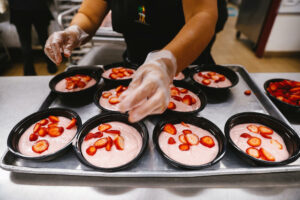
To prep these meals, LAUSD has invested in new combi ovens to help create fresh meals for students. These types of ovens allow for staff to cook meals via three methods: convection, steam, and a combination of steam and convection. They also aim to entice students to the cafeteria not just with new delicious meals, but also a different environment. Using new resources, they plan on “freshening” school cafeterias and providing charging stations for students. The District has also made the first-ever food truck that tours schools in LAUSD and offers different dishes. Another approach is to have students be more hands-on with the food that they are consuming. Hydroponic units have been provided to schools where students may learn how to grow fresh plants and harvest them.
YumYummi App
For more information on all the meals LAUSD provides, download the YumYummi app. It contains a schedule of meals for each school and also provides nutritional information, such as calories and possible allergic concerns. You can find more information about the app at lausd.yumyummi.com!
Read More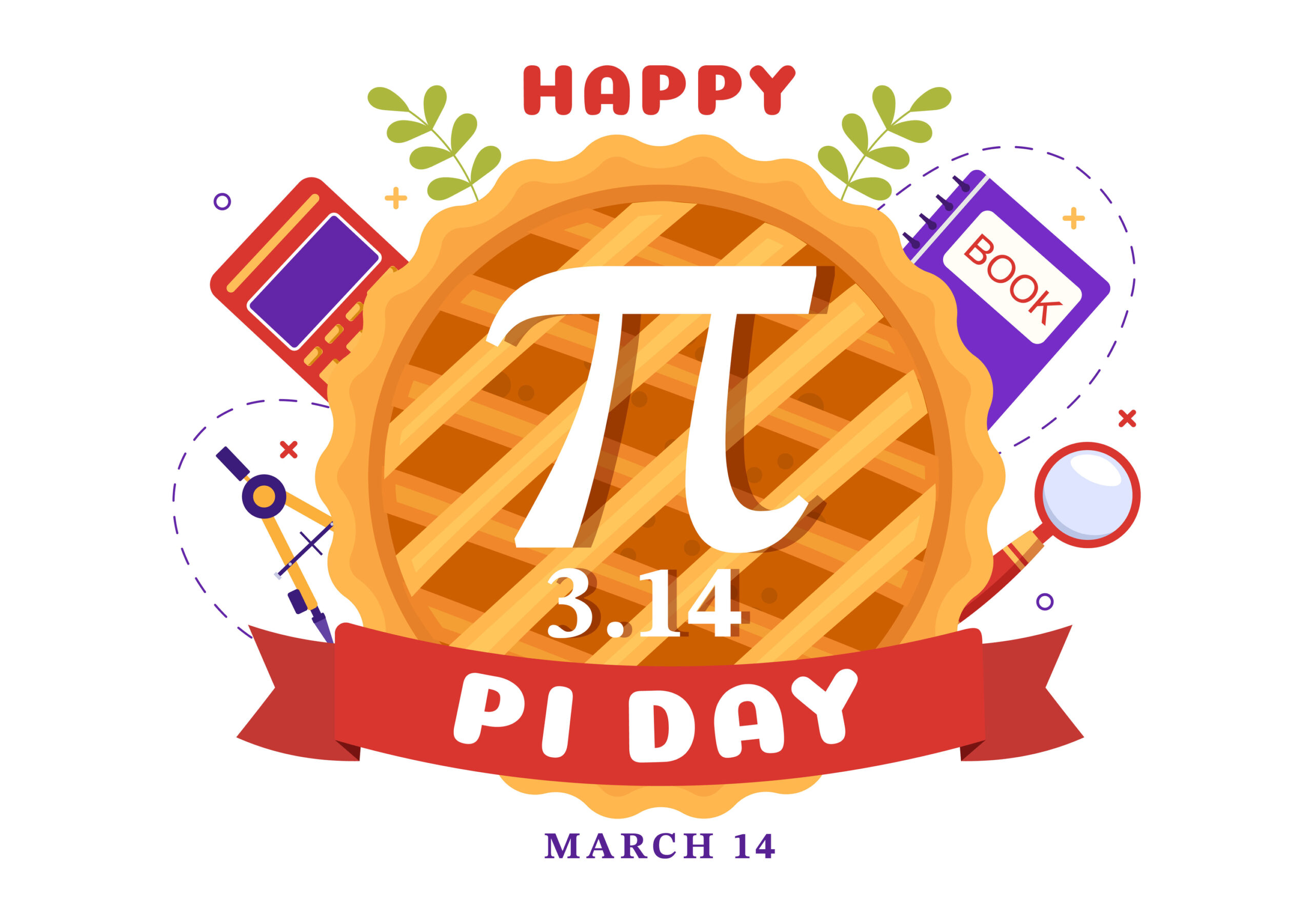
Pi Day
by Jordin Lim
Another year, another Pi Day at Science Academy! Taking place Thursday, March 14th (3.14, of course), ASB hosted a highly successful Pi Day.
What is Pi Day? Read this article from last year for some irrationally fun Pi Day history!
https://www.thescienceacademystemmagnet.org/2023/03/22/pi-day-article/
Students enjoyed an extended lunch with fan-favorite festivities, such as a pie eating contest, carnival games, and the renowned throw-pie-at-teachers activity. Shout out to the students who, according to the accounts of Mr. Shepherd and Mr. Park, hit them square in the face, which was quite a challenge considering the wind!
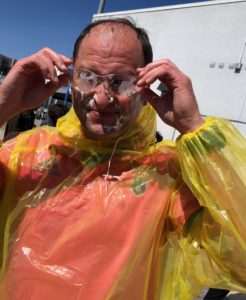

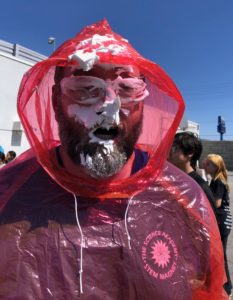

The carnival games were a wonderful way to spend our lunch. Fellow students running the booths were bursting with energy and made the game-playing experience extra fun. But the cherry on top was the multitude of prizes I saw students return to class with. One of my classmates showed up to 5th period with a whole grocery bag of little stuffed animals!
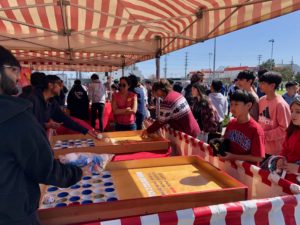
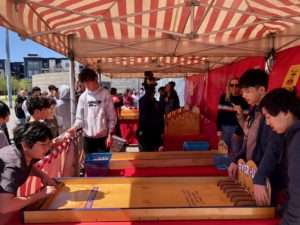
Hungry? Well, there were also tables set up where ASB offered students refreshments, pre-ordered pizza, and of course, plenty of pie.
This year, the seniors presented the student body with a new game. With the opportunity of winning $50 and $25 gift cards, we were to get the signatures of as many seniors as possible, who were designated with signs and cool hats. I found this to be an incredible activity! This allowed students of all grade levels to get to know the seniors. I saw a ton of students running around, trying to find as many seniors as they could.

Even if all these activities didn’t catch your eye–though I’m not sure how they wouldn’t– the extended lunch was an excellent opportunity to play around with your friends. I saw plenty of students enjoying their lunch playing volleyball on the blacktop or football and soccer on the field. I can’t wait for next year’s Pi Day and all the fun activities ASB has in store, and I bet the student body can’t either!
Read More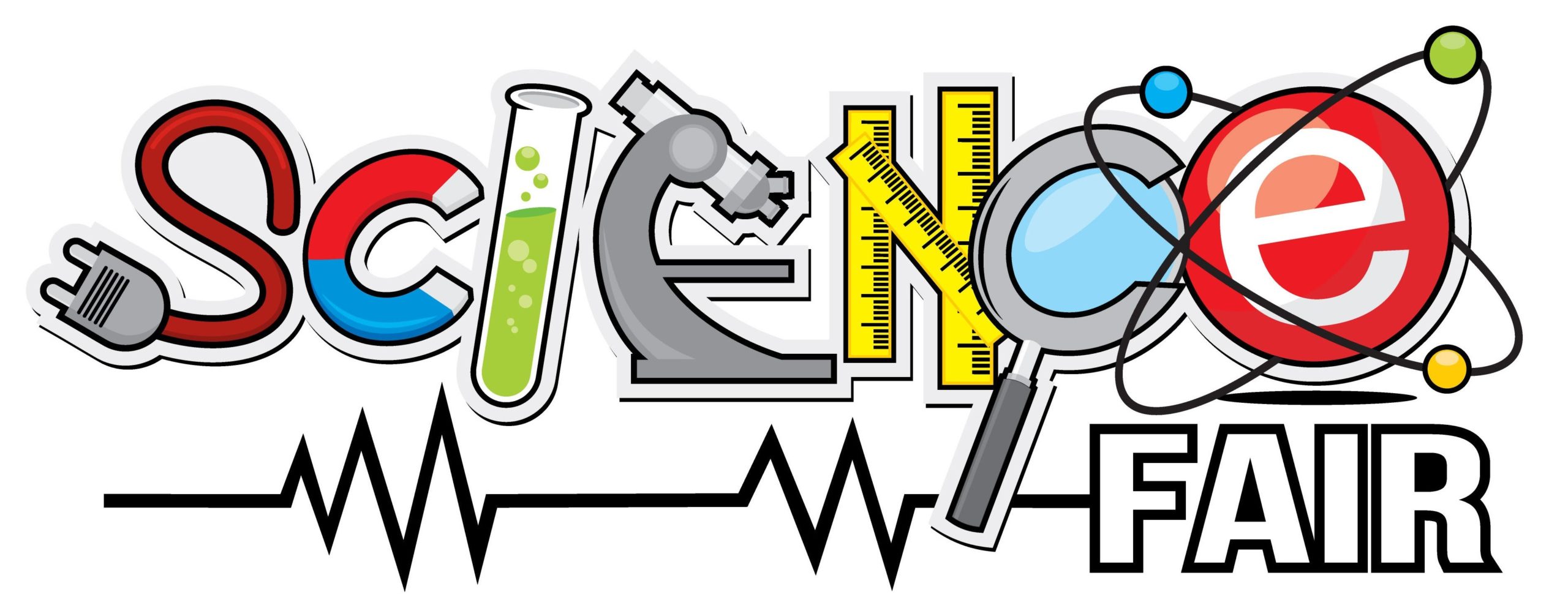
8th Grade Science Fair Interviews
by Andi Villamor
Congratulations to all the 8th Grade Winners!
-
1st Place: Ione McLain (How Does Air Quality…?)
-
2nd Place: Evan Goodman and Simon Oshev (Chill Pill)
-
2nd Place: Max Pestes and Isaac Sapire (Removing Microplastics from Water)
-
3rd Place: Collin Lee and Roy Li (The Wind Turbine Showdown)
-
Honorable Mention: Margaux Lane (Measuring the Strength of I-beam Types)
-
Honorable Mention: Hasmik Yedoyan and Tanvi Chandrashekhar (The Effect of Saturation on the Perception of the Image)
Simon Oshev and Evan Goodman (2nd place winners)
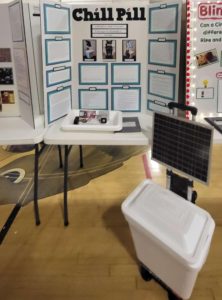 What is the title of your project? Chill Pill
What is the title of your project? Chill Pill
What was your project about? It’s a solar-powered solution for medication storage for the unhoused.
Why did you choose this project? We saw that homelessness is a big problem in Los Angeles, and I take allergy medication, so it made me think about how the unhoused are unable to store medication if they have allergies like me or other health issues.
What did you use to make the storage system? We used a thermoelectric module, which uses two different types of semiconductors to cool one side of the device and heat the other side, and we added heat sinks and fans to carry the cool air out.
How did you determine your design for the storage? We looked at [factors like] portability, low cost, and simplicity.
What was the biggest challenge you faced? It was kind of the team aspect, like finding the right times [to work on the project together].
If you did this project again, what would you do differently? The problem is the efficiency. Basically, after one hour, the temperature goes down to about 50 degrees and it shuts off because we set the battery so that there’s a discharge limit to make it safer. So in order to fix that, we would have to add a temperature-sensing circuit breaker so that when it gets cool enough, it turns off, and once it gets hot enough, it turns back on.
What would be the next steps for the project if you wanted to partner with an organization and implement it on a larger scale? Make it more user-friendly because it’s kind of difficult to learn how to use it. [We would also make it] sturdier and more durable. By sturdier, I mean safer to the elements, like making it waterproof.

Margaux Lane (Honorable mention)
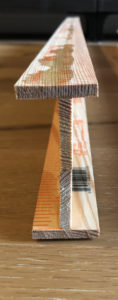 What was the title of your project? Measuring the Strength of Different I-Beams
What was the title of your project? Measuring the Strength of Different I-Beams
What was your hypothesis? The beam that is thickest in the middle would be the strongest, and it was. [If a beam has a greater thickness in the middle, then it will have a lower distance displacement after the addition of weights].
How did you do the experiment? I used yard sticks and wood glue, and I made these long wooden beams [of different thicknesses] and put weights on the ends to see how much they would bend. [To measure that,] I clamped one end of the beam to a table and I measured its distance to the ground before I put the weight on it and then I put the weight on and measured that distance, then calculated the displacement – so the ones with the least displacement [bent the least and were therefore] the strongest.
Why did you choose this project? I chose it because I thought it would be interesting to see which models would be the strongest.
What application do you think your project could have? The project could be applied to construction and creating stronger infrastructure.
What was the biggest challenge you faced? The biggest challenge was probably while I was testing it, just getting the measurements accurate and making sure they were bending the right way. Some of them broke at the end.
If you did this project again, what would you do differently? I would probably make [the beams] stronger and test them with more weights.
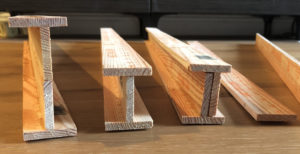
Tanvi Chandrashekar & Hasmik Yedoyan (Honorable mention)
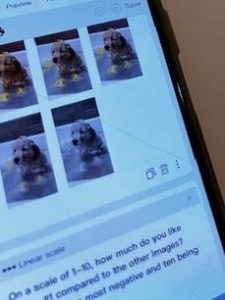 What was the title of your project? How Does Saturation Affect the Perception of an Image?
What was the title of your project? How Does Saturation Affect the Perception of an Image?
What was your hypothesis? If the saturation of an image is between 50-75 chroma level, then people will gravitate towards it more.
How did you do the experiment? We got eighty people to take a survey with thirty images, and each of them were saturated to a different level. They then [rated] which images they liked the most and we analyzed the data with graphs and came to the conclusion that people like images with a chroma level of 50-75.
Why do you think this level of saturation is the most appealing? It makes the pictures more vibrant so that they’re more attention-grabbing, but not so vibrant that it makes them look less natural.
 Why did you choose this project? We wanted to do something color-related, and apparently doing color was really hard because we had to learn about the color scale [and other aspects of color theory], so we just chose saturation.
Why did you choose this project? We wanted to do something color-related, and apparently doing color was really hard because we had to learn about the color scale [and other aspects of color theory], so we just chose saturation.
What was the biggest challenge you faced? Mainly just trying to analyze the graphs since there was so much data.
If you could do this project again, what would you do differently? We would do a smaller test group, because eighty was a lot, and it was really hard.
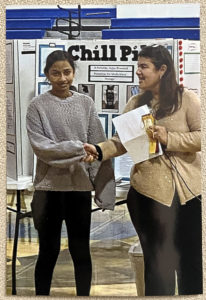
Congratulations also to the High School Winners!
-
Naira Badalyan (9th) (Using Microchannel Heat Sinks to Enhance Cooling of Solar Cells and Increase Power Output)
-
Ryan Lee (10th) (Modeling the Atlantic Maritime Trade with Physarum Polycephalum Slime Molds)
-
Geonhee Lee (10th) & Harshini Manikandan (10th) (How does the Aspect Ratio of the Wing of the Aircraft Correspond to the Lift and Drag Ratio)
-
Valeri Petrosyan (9th) (The Simulation and Use of Reinforcement Learning AI for Path Generation of Target-Seeking Munition)
-
Xavier Rowe (10th) (Testing the Methane Yield of Different Food Groups)
7th Grade Science Fair Interviews
by Maleeya Mickelson
After months of diligently working on their projects, from researching to experimenting to painstakingly assembling their boards, our 7th and 8th grade students have finally been able to showcase their hard work at the annual Science Academy Science Fair. This year saw many informative projects from the students aiming to solve a variety of problems with a creative approach. Congratulations to the following 7th grade students who won this year’s school Science Fair and who will be advancing on to the Los Angeles County Science Fair where they’ll represent The Science Academy STEM Magnet:
1st Place – Aiden Kim & Jayden Park
2nd Place – Jackson Rutner
3rd Place – Adam Young
Honorable Mention – Daniel Jang
I interviewed the 1st place winners, Aiden Kim and Jayden Park, and the 2nd place winner, Jackson Rutner, to learn more about their projects and their overall reflection on this year’s experience.
1st Place – Aiden Kim & Jayden Park | “What is an MFC?”
 What was your hypothesis?
What was your hypothesis?
If bacteria in soil were to generate electricity with a microbial fuel cell (MFC), then it would generate more electricity than distilled water that has no bacteria to use and be able to power a microbial fuel cell.
What information was your project aiming to find out?
We were trying to find out if bacteria can generate electricity using a MFC or an alternative battery that collects energy by taking the electrons from biochemical reactions catalyzed by bacteria. We also were trying to find out if an MFC utilizing bacteria generates more electricity than an MFC using distilled water.
How did you conduct your experiment?
Our experiment utilized the power of electrogenic bacteria, such as E. coli, which are special types of microbes. Due to electrogenic bacteria being able to release electrons extracellularly, anodes in a MFC are able to take the electrons and harness them to electricity. Many of these types of electrogenic bacteria important to MFCs are commonly found in all types of soils. The overall set-up of our experiment consisted of two sets of two large containers connected by two small pipes. In one set, we put soil and bacteria food into one container and normal tap water with an oxygen generator in the other. The other set of containers was set up the same way, but instead of soil, we used distilled water and didn’t add any bacterial food because it is not needed for the distilled water. Once this was built, we used a volt multimeter to measure the amount of millivolts three times a day.
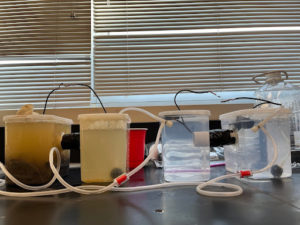 How did you overcome complications during the experimental process?
How did you overcome complications during the experimental process?
A complication we ran into was that the pipe connecting the two containers for our experiment was slowly leaking, potentially changing the amount of electricity generated. So, the real amount of electricity generated may be higher than our observation.
What were the results of your experiments?
Our results showed that the bacteria with MFC generated more electricity than distilled water with MFC, which supported our hypothesis. In our experiment, electricity was produced by the soil bacteria MFC, at an average of 5.04 mV. In the distilled water MFC, the amount of voltage generated remained roughly about 0 mV. In the soil MFC, the voltage pattern was increased and peaked at day 7, and the amount of voltage was then dropped. The reason behind the amount of voltage being reduced might have been that the food ran out, or the bacteria died/stopped growing.
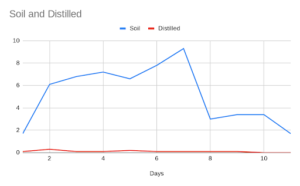
What inspired you to choose this topic for your project?
We were scrolling on TikTok and found an interesting video about bacteria creating electricity, which led us to creating our project. The outcome of our experiment could be helpful to people in the future because MFCs could lead to a more efficient production of electricity.
If you were to do this project again (or one similar), what would you change?
If we were to do this project again, we would have tried to make a permanent MFC by adding bacteria food every week and seeing if the bacteria survives, or we would make our MFC generate more volts as our current MFC can only generate a couple millivolts.
What advice do you have for those participating in the science fair next year?
Always try your best and be your best at all times.
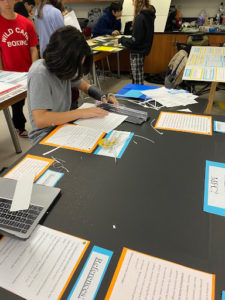
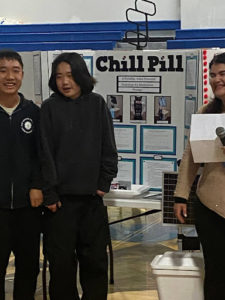
2nd Place – Jackson Rutner | “Tidal Trouble: How Does Different Tidal Patterns Affect Erosion?”
 What was your hypothesis?
What was your hypothesis?
If different tidal patterns are compared to each other, then semidiurnal tides (a type of tidal pattern that cycles twice a day instead of once a day like diurnal tides) will cause the most erosion compared to diurnal tides because of a faster tidal pattern.
What information was your project aiming to find out?
I was trying to figure out how erosion in different places with different tidal patterns affect how fast the land loses mass.
How did you conduct your experiment?
My project uses a tank, chalk and a VEX v5 system. To prepare I code the VEX v5 system to have the motor move the styrofoam with a custom function to simulate diurnal tides. Afterwards, I put a block of chalk into one edge of the tank. To set up the system, I suspend the styrofoam with the metal plates at the bottom 0.5 inches below the top of the chalk. I fill the tank to the top of the chalk block with water. Now I run the program for two weeks or until the chalk is gone. To record my data, I weigh it by the end of the 2 weeks. For semidiurnal tides, I repeat the process with a custom function to simulate the semidiurnal tides. Finally, I repeat with no function for the control.

How did you overcome complications during the experimental process?
A complication I ran into was having a way to simulate the tides was tough and I even cracked the first tank I was going to use because of a faulty design to control the water level. To fix that problem I used rubber bumpers to hold tightly but not destroy the tank like I did in the previous iteration.
What were the results of your experiments?
According to the data collected, the hypothesis that if tides are compared to each other, semidiurnal tides will cause the most erosion compared to diurnal tides because of a faster tidal pattern appears to be incorrect. It would appear that the slower diurnal tides were able to have more impact because the surface of the water could be affected. The tides do seem too small to play a significant role in the grand scheme of things of the ocean. The project did have some errors, like the fact that it was not one solid eroded block. Also because the chalk absorbed water, it gained 10 ounces, changing the experiment.

What inspired you to choose this topic for your project?
I had a question in sixth grade in science class that Mr. Lewis did not know the answer to, and I could not just google it, so I decided I may as well have a science project that I was actually interested in so I would not put in lackluster effort to make sure that the project was enjoyable and relevant.
If you were to do this project again (or one similar), what would you change?
If I did this project again, I would make sure that the simulation had a greater effect on the water level because the styrofoam I used to control the water level was not thick enough to move the water the amount that I had hoped for in this experiment.
What advice do you have for those participating in the science fair next year?
Make sure that you like your project and have a unique and novel project – be sure you can’t just Google search the project type or the answer.


Pictures of Science Fair and Board Assemblies:
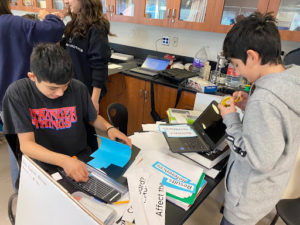

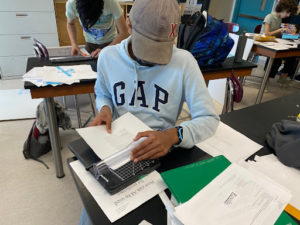
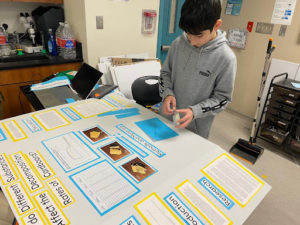

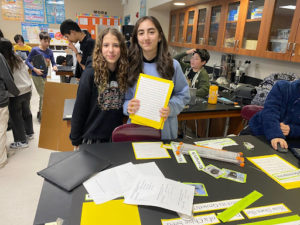

Lunar New Year Fun
by Desmond Devine and Ryan Park
To kick off the month of February, the Science Academy ASB celebrated Spirit Week from February 5th to the 9th. On Monday it was Pajama Day, Tuesday was Paint the Town Red Day, Wednesday was Jersey/College Day, Thursday was Twin Day, and Friday was Culture Day. Friday was particularly chosen as Culture Day to celebrate the Lunar New Year, which is the Year of the Dragon. To celebrate the Lunar New Year, the Korean Parent Organization prepared different dishes and fund activities for students to enjoy.
 As students walked down to the cafeteria, they were greeted by a traditional performance of janggu, Korean drums, and buk, another type of drum. Students then stood in line as they eagerly waited to receive a bowl full of Korean dishes. In each bowl, the Korean Parent Organization put in bulgogi (불고기- grilled marinated meat), japchae (잡채- stir-fried glass noodles), and rice (밥). As a little dessert, students were also given ppeongtwigi (뻥튀기 – sweet puffed grains). There were also various activities to keep the students entertained, the most interesting being Tuho (투호). Tuho is a very traditional game where participants attempt to throw arrows into a canister from a certain distance away. Another popular game has recently become very well known due to the hit TV show Squid Game. Ddakji (딱지) is a game where players have to use their origami squares to try and flip the other player’s origami square. The last activity was jegichagi (제기차기), where the goal of the game is to keep a shuttlecock wrapped in paper in the air for as long as possible. The first part “jeggi-” means an object used in play, and “-chagi” means to kick something.
As students walked down to the cafeteria, they were greeted by a traditional performance of janggu, Korean drums, and buk, another type of drum. Students then stood in line as they eagerly waited to receive a bowl full of Korean dishes. In each bowl, the Korean Parent Organization put in bulgogi (불고기- grilled marinated meat), japchae (잡채- stir-fried glass noodles), and rice (밥). As a little dessert, students were also given ppeongtwigi (뻥튀기 – sweet puffed grains). There were also various activities to keep the students entertained, the most interesting being Tuho (투호). Tuho is a very traditional game where participants attempt to throw arrows into a canister from a certain distance away. Another popular game has recently become very well known due to the hit TV show Squid Game. Ddakji (딱지) is a game where players have to use their origami squares to try and flip the other player’s origami square. The last activity was jegichagi (제기차기), where the goal of the game is to keep a shuttlecock wrapped in paper in the air for as long as possible. The first part “jeggi-” means an object used in play, and “-chagi” means to kick something.

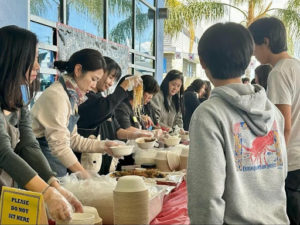
Celebrating the Lunar New Year had been a yearly tradition for the Science Academy before the pandemic hit and students had to go into remote learning. It’s wonderful to see the student body bond over food and games while they also experience some of Korean culture. Lots of appreciation to the Korean Parent Organization (KPO) for organizing such a great event and feeding all our students!
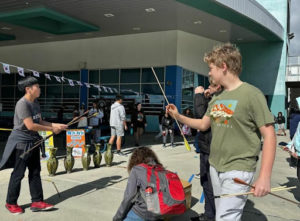

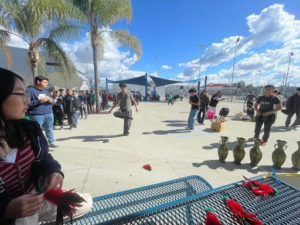
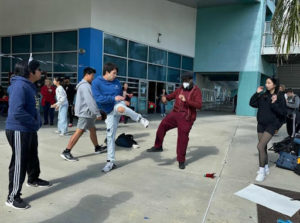
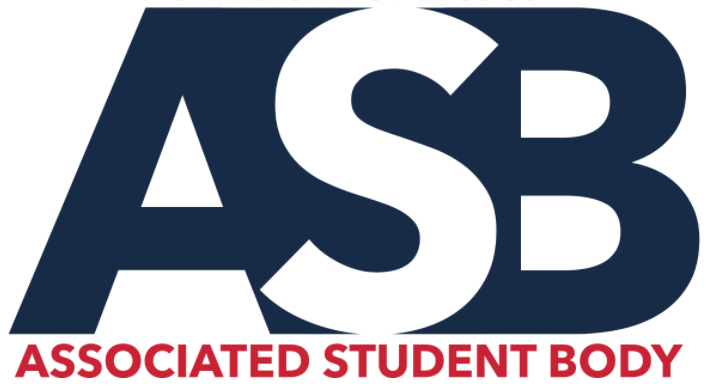
Mid-Year Message from our ASB President
Hello Science Academy!
I hope you are all rejuvenated and ready for an exciting journey ahead as we kick off the Spring semester. As we step into this new chapter of our academic year, I want to extend a warm welcome back to every student! The Spring semester is a time of renewal and a chance for us to build on the successes and experiences of the past. I am excited about the possibilities that lie ahead and the contributions each of you will make to our vibrant school community. As we step into the Spring semester, I’d like to reflect on the journey we have had in the first half of the school year. Serving as your ASB President has been an honor, and I want to share our collective achievements and aspirations moving forward.
In the beginning of the year, we successfully hosted Club Rush. With more than 40 unique clubs participating, this event was a wonderful showcase of the diverse interests and talents within our student body. Shortly after, we hosted our first Movie Night featuring “Spiderman Across the Spider-Verse.” It was a resounding success, not only helping raise money for the graduating class, but also providing an opportunity for students to unwind, connect, and enjoy some time together. Moving into October, we had Halloween grams, a spooky Haunted House in the locker rooms hosted by EVHS, our Students vs. Teachers Halloween Kickball game, and the biggest event of 2023 — our Homecoming! Three months of planning, a pep rally, and a football game later, we successfully hosted our Homecoming Dance with its stunning silver and purple theme. With Quinney as our DJ, a photo booth, free food, beautiful decorations, and a turnout of more than 200 people, I think it’s safe to say that our dance was a success. October was also a very special time to roam in our hallways as ASB spent the weekend decorating the middle hallway for Halloween. With blacked out windows, balloon towers, and other Halloween items covering the walls, I think our hallways have never looked more spooky! Moving into the month of giving, the ASB also worked to give back to the community. With your help, we were able to host a Thanksgiving food drive to help both EVHS and SASM families in need. During the last month of the 2023 school year, the ASB fostered holiday spirit by hosting our Winter Wonderland Contests. The students were able to engage in a Winter Art Contest with gift card prizes to various restaurants and our teachers participated in a Winter Door Decoration Contest to win candy canes for their 7th period class. Both events were a hit and some remnants of the Door Decoration Contest can still be seen in our hallways.
Now that we’ve reminisced about the moments we’ve already created together, it’s time to shift gears and talk about what’s on the horizon. This semester is our blank canvas, waiting for us to splash it with the colors of new experiences and exciting initiatives. Firstly, an update about our WATER FOUNTAIN PROJECT. For those of you who did not know, the ASB and I have been working very diligently to get the water fountains in our school replaced with better ones that include bottle-filling stations. We are officially in the last steps of getting the project approved by all the necessary administration, so construction should begin very soon. Other events to look forward to include a Lunar New Year celebration by the school’s parent organization in early February as well as a Masquerade Ball for the high schoolers some time in late February. The middle schoolers are also scheduled to have a dance on Friday, January 20. I am also excited to announce that ASB will be conducting a school-wide murder mystery game some time in February or March where students will have to go from class to class solving puzzles in order to find who committed the crime. Other events to look forward to include more Movie Nights (details TBD). We are also scheduled to have our beloved Pi Day in March. I also hope to bring a blood drive to our school. The Los Angeles region is currently experiencing a critical blood supply shortage and I think our school can help alleviate some of that strain by mobilizing our age 16+ student and teacher population. Finally, I plan on delivering on my campaign promise of bringing food trucks to the school sometime near the end of May to celebrate the end of our stressful AP Exam testing season. In addition to everything discussed above, there’s a treasure trove of upcoming events that promise even more fun and surprises. Stay tuned for more details in the coming months!
I would like to extend my heartfelt gratitude to the dedicated ASB team, faculty advisor Mr. Parks, and each student and teacher who has contributed to the success of our initiatives. Your passion and support truly mean the world to me, and are instrumental in making the Science Academy a vibrant and dynamic place to learn and grow.
As we navigate the second half of the school year, I encourage you all to share your ideas and suggestions; QR codes for the ASB’s suggestion box should be going up soon. Also, always feel free to come up to me in the hallways with any questions or concerns. The ASB and I sincerely appreciate your input. Together, let’s continue making the Science Academy a community we are all proud to call our own.
Here’s to an inspiring and fulfilling Spring semester filled with growth, learning, and fun! I can’t wait to see this year’s yearbook!
Your ASB President,
Daniel Svediani

Join a Science Academy Club!
By Andi Villamor
Want to make the most of your time at school? Joining a club is the perfect opportunity to explore the world beyond the classroom, meet people who share your interests, develop new skills, and make unforgettable memories. Not to mention, clubs can give you valuable experiences that allow you to develop strong interpersonal and leadership skills, as well as boost your caliber on college applications.
If you went to Club Rush in September but decided that none of the clubs were for you, maybe you just lack the relevant information! This article will detail many of Science Academy’s amazing clubs – and how to join them – through the words of their presidents. Remember, it wouldn’t hurt to simply try out a club by going to a meeting. If you end up changing your mind, then you can always back out, so why not give it a shot? Without further ado, here are some of our most popular clubs and everything you might want to know about them.
Biology Club
Joining this club has major academic benefits, especially for our seventh and ninth graders taking Pre-AP or AP Biology. If you hope to pursue a major or career in biology, being in this club could help you get a great head start and continue to drive your interest in the field.
The club meets during lunch every Monday in Ms. Musial’s room (N313). As the President of Biology Club Ryan Lee says, his club’s goal is to “empower those who wish to pursue biology and to provide a common hub for anything biology-related. If you are having trouble with biology or if you want to pursue a biology-related competition or career, you should join Biology Club in order to enhance your understanding.” During meetings, club officers give biology lectures and extra assistance for students needing help in class.
Interested? Come to the next meeting and join their Schoology Group with this access code: 3WGH-8PX9-XNDND.
Journalism Club
Members of this club write school-appropriate articles of their choice for The Science Academy NewsFlash on the school’s official website. What I personally love about this club is that it is incredibly versatile. Since it only meets from 5:30 – 6:00 PM every other Tuesday on Zoom, members don’t need to worry so much about fitting it into their day and can write at their own pace about nearly anything they want. Additionally, students in this club get the opportunity to express themselves through writing and showcase their articles on the school’s website.
The President of Journalism Club, Milan Riley, encourages you to join: “Members are free to choose any appropriate topics for an article and can write at their own pace. Joining this club will improve writing skills, look good on college applications, and give back to the Science Academy community!”
If you think this club is right for you, join the Journalism Club Schoology Group with this code, FVT4-9PG2-RWPFZ, and stay tuned for the next Zoom meeting!
International Food Club
President of IFC Andi Villamor states, “Our club’s goal is to expose its members to food from all over the world and to give students a safe space where they can share dishes from their own cultures.” Meetings are usually potlucks, during which members bring food to share with one another. Club officers introduce these dishes (ingredients, origins, etc.) before encouraging students to taste the food. However, on some meetings, members – with the officers’ help – may work together to prepare a simple dish, which not only immerses students in foreign cuisines, but also gives them a great time.
International Food Club meets every other Friday at lunch in Ms. Musial’s room (N313). Andi reminds anyone interested in joining that “participation from our members is key. Without sharers or people willing to help out, the club can’t continue. So if you’re thinking about joining, be ready to participate and keep in mind that we’re not just a lunch program. We’re a community dedicated to sharing the world’s food with the students of the Science Academy.”
Want to join the fun? Come to their next meeting and contact them at internationalfoodclub371@gmail.com for information on how to join their Schoology Group.

Martial Arts Club
Esther Chong, President of Martial Arts Club, tells us, “Every meeting follows a flexible schedule. We begin with a respectful bow to one another, followed by 10 minutes of stretching and warm-ups. The next 10-15 minutes are devoted to specific techniques or fundamentals associated with a particular martial art. This can include strikes, blocks, kicks, or other movements, with the goal of improving sparring and form techniques. Of course, students are welcome to eat their lunch before the meeting begins. The main objective of this club is to refine techniques of martial arts, placing emphasis on not only the physical aspects, but also the mental/spiritual qualities of martial arts, promoting values of discipline and perseverance. Through guidance and encouragement in meetings, students are able to improve physical fitness, self-defense skills, and overall well being. In addition, this club is intended to generate interest in martial arts, spreading its values and benefits that may impact one’s life significantly.”
“Overall, joining the Martial Arts club offers a holistic approach to well-being and provides an opportunity for students to engage with other martial artists, or even learn new techniques. Hope to see you at our next meeting!”
Martial Arts Club meets every Wednesday during lunch in the Cardio Room. Join their Schoology group with this code: N7GJ-NWGJ-M65T3.
Ethics Club
This club strives to provide members with impactful insights about themselves and the world around them while allowing students to develop a strong moral compass, a trait that could benefit them for the rest of their lives. During meetings, which occur during lunch every Tuesday in Mr. Nuno’s room N307, members discuss ethical dilemmas and topics.
According to Jordin Lim, Co-President of Ethics Club, “Through this club, we hope to provide students with a place where they can discuss–or do some friendly arguing–with their peers about ethical topics and dilemmas they may find interesting. It really is great fun! You can even come just to listen in on what everyone else has to say; you don’t have to participate in discussion if you don’t want to. Sometimes we even bring little snacks 🙂 We will also be sending out a team to compete in the National Ethics Bowl and although the competition is only open to high schoolers, both middle school and high school students are more than welcome to join our club. If you would like to check out some examples of ethical dilemmas provided by the National Ethics Bowl, look through these https://nhseb.org/case-library. If you’d be excited to approach these cases with your peers or even if you’re curious to find out exactly what ethics is, consider giving the Ethics Club a try!”
Interested? The access code for joining their Schoology Group is N47D-ZK6N-SC3H6 and feel free to drop in to the next meeting.
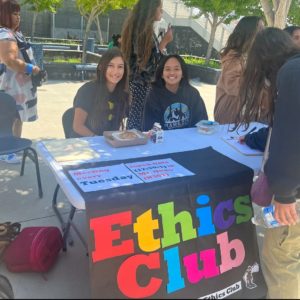
Volleyball Club
Joining this club is a great opportunity to practice volleyball in a more casual and fun setting and meet new people. The club may be of particular interest to players on the varsity or junior varsity volleyball teams that are looking to get some extra practice in as well as to students who want to try out for those teams some day. The club meets every Friday during lunch on the volleyball courts.
Daniel Shin, Co-President of Volleyball Club, says that his club’s goal is to “bring the community together,” and adds, “If you want to get better at volleyball and make some new friends, join us!”
If you’re interested, come to the next meeting and talk to either Dillon Reeves or Daniel Shin to join their Discord server.
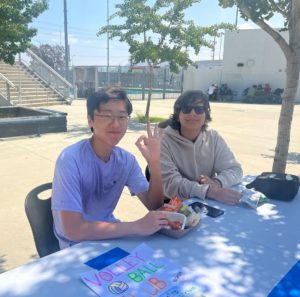
Armenian Club
Milena Karagezyan, President of Armenian Club, tells us, “During meetings, we talk and learn about Armenian history and its future–sharing any new information discovered such as historical events that occurred in Armenia and Greater Armenia. We also watch educational videos and mvoies, listen to and learn authentic Armenian songs, and we may even have a special guest joining us as we did last year. The goal of my club is to teach and inform as many people as possible about Armenia and its history, and hopefully try to help Artsakh and the people from Artsakh through fundraisers and any other ways we can. Members also do fun activities such as playing Kahoot, sharing Armenian food, and so much more. This is a great opportunity for you to learn about a culture that has survived for thousands of years and is one of the oldest surviving countries in the world”
Armenian Club meets every other Thursday during lunch. If you decide to join, you should come to their next meeting in room N313.

Environmental Club
Give back to the environment by joining Environmental Club! This club is great for earning volunteering hours to put on your college application and have a great time earning them. Attend beach and park clean-ups with fellow students as you help care for our planet and maybe even have some lunch with them afterwards. President of Environmental Club Daniel Said says, “The goal of the club is to foster environmental awareness in high schoolers and to make a positive impact in our local environment.”
Interested? Join their Schoology group with this code: 5ZHN-3DS7-B8X3C.

Dungeons & Dragons Club
Among the most popular clubs on campus, Dungeons & Dragons Club is dedicated to bringing our students together through friendly game play. They welcome players of all levels of experience and are open to teach you everything you need to know about this wonderful game. As President of Dungeons & Dragons Club Aidan Khan says, “We are a community of people who do not judge, have fun, and exercise our imaginations.”
The club meets every Wednesday during lunch in room W202 (Mr. Lewis’ room) on the second floor. If you’re interested, come to the next meeting and consult with the club officers.
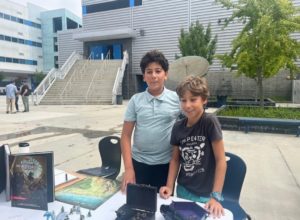
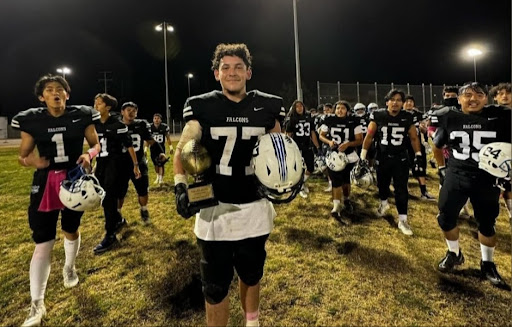
Homecoming 2023
By Milan Riley, Jordin Lim, and Ryan Park
On October 20th and 21st, the Science Academy celebrated Homecoming events, including a pep rally, Homecoming football game, and Homecoming Dance.
The pep rally occurred Friday in the gym during lunch and 5th period, and was attended by both East Valley High School and The Science Academy high school students. There were many surprise events, such as a performance by the Dance Club as well as a lip sync battle between our own Mr. Parks and an East Valley teacher. Students were also invited to participate in several light-hearted competitions. Besides these fun extras, the point of the rally was for the fall season Falcon sports teams to introduce themselves. These included girls’ flag football, girls’ volleyball, cross country, and last but definitely not least our beloved football team. Tying the event together were our cheerleaders, whose active involvement boosted the morale and excitement of the rally.
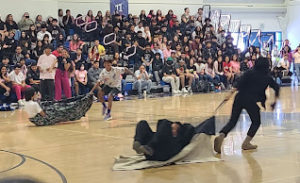
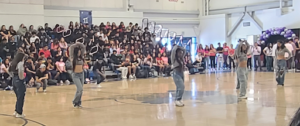
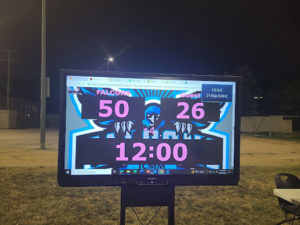 As for the Homecoming Football Game, our school played against Discovery High School. Our Falcons came out on top against the Bulldogs, winning 50 – 26. After the second quarter, a half-time performance was held as trucks carrying the homecoming court and our school’s ASB were paraded around the football field. After the performance, we continued the second half of the game and were able to not only bring home a trophy but also qualify for playoffs! While there were those who thought the popcorn was somewhat lacking, the game certainly wasn’t. The $5 tickets were well worth their price, and the triumphant game had a notable added effect of splendor under the dramatic evening sky.
As for the Homecoming Football Game, our school played against Discovery High School. Our Falcons came out on top against the Bulldogs, winning 50 – 26. After the second quarter, a half-time performance was held as trucks carrying the homecoming court and our school’s ASB were paraded around the football field. After the performance, we continued the second half of the game and were able to not only bring home a trophy but also qualify for playoffs! While there were those who thought the popcorn was somewhat lacking, the game certainly wasn’t. The $5 tickets were well worth their price, and the triumphant game had a notable added effect of splendor under the dramatic evening sky.
Finally, the climax of Homecoming events took place on Saturday, October 21st, from 7-10 p.m. with our Homecoming Dance. From a freshman’s perspective, this indoor dance was definitely a step up from the outdoor dances we had in middle school. Purchasing a $12 ticket ($15 at the door) meant free pizza, chips, cake, and water. Accompany that with gorgeous decorations and lights, along with great music, and you have a formula for a fantastic dance! Toward the end of the night, we held a dance for the Homecoming king, Anthony M., and queen, Zahra R..
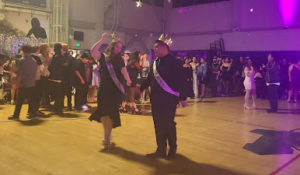
In the crowd were the other nobles of the Homecoming Court, listed below:
Grade 12: King – Anthony M., Queen – Zahra R.
Grade 11: Prince – Daniel S., Princess – Ava S.
Grade 10: Duke – Madison P., Duchess – Payton S.
Grade 9: Knight – Luis S., Lady – Kiahn L.
Thank you to all who helped to make the evening so special!
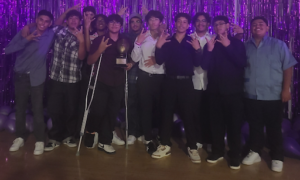 2023 Falcon football team at the Homecoming Dance
2023 Falcon football team at the Homecoming Dance
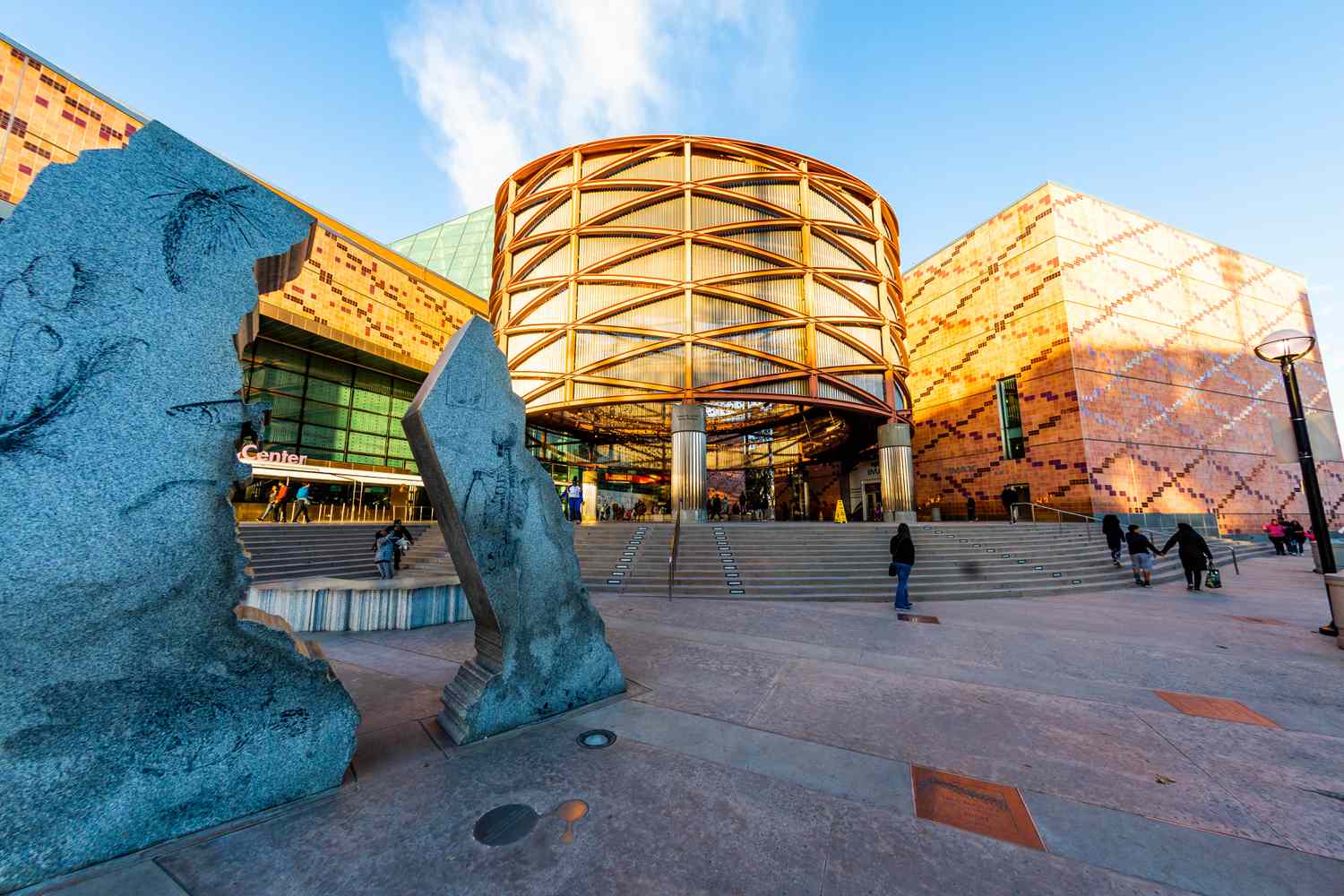
Fall 2023 Middle School Science Center Field Trip
by Maleeya Mickelson
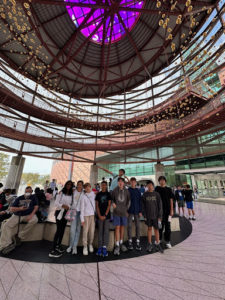 A favorite Back to School tradition is our annual middle school field trip to the California Science Center, which this year took place on September 21, 2023. This field trip occurs early on in the school year, giving students a great opportunity to make new friends, socialize, and share some science-related adventures.
A favorite Back to School tradition is our annual middle school field trip to the California Science Center, which this year took place on September 21, 2023. This field trip occurs early on in the school year, giving students a great opportunity to make new friends, socialize, and share some science-related adventures.
The California Science Center was created to teach students about science in a fun way using hands-on exhibits. At the Science Center, studentsare able to further their knowledge on subjects they’ve been learning about at school as well as general scientific topics of interest. As a STEM school, it’s especially important that we go field trips like this in order to allow students to use their critical thinking and creativity to learn more about different scientific concepts. This field trip can also spark new scientific interests that students may want to explore in the future.
Right after we arrived at the Science Center, we watched the IMAX movie Blue Whales. IMAX movies are different from regular movies, in that they are shown on gigantic screens and in 3D. The IMAX movie we watched this year showcased the journeys of two crews of scientists: one documenting whales in the Gulf of California, and the other searching for a missing population of blue whales off the Seychelles Islands. This movie taught the students about the communication methods, diets, survival challenges, and so much more regarding these massive creatures, which are the largest mammals to ever live on Earth. Most importantly, the students learned about the impact of blue whales on the oceans’ ecosystems and why we must strive to protect them.
Once the IMAX movie finished, everyone headed to the cafeteria area to eat lunch. After lunch, groups of students with their chaperones were free to head off to explore the exhibits.
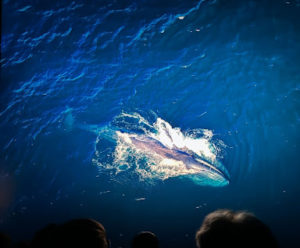
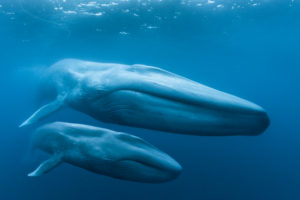

Images from Blue Whales
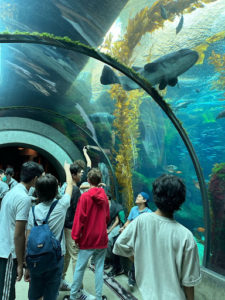 The California Science Center includes four major exhibit areas: World of Life, Creative World, Ecosystems, and Air and Space. The World of Life exhibit highlights aspects of human biology, evolution, and genetics to teach students more about the living world around them and how it came to be. Creative World shows students how people take advantage of technology to help them with transportation, communication, and construction projects. The Ecosystems exhibit lets students explore more that 200 species of plants and animals in various environments. This exhibit shows how organisms on Earth all depend upon each other and are therefore interconnected. The Air and Space section of the Science Center allows students to learn more about atmospheric flight and space travel using the principles of science and engineering. This exhibit area also houses the space shuttle Endeavour, which will unfortunately be leaving the Science Center on December 31, 2023 until its new exhibit is created nearby at the future Samuel Oschin Air and Space Center.
The California Science Center includes four major exhibit areas: World of Life, Creative World, Ecosystems, and Air and Space. The World of Life exhibit highlights aspects of human biology, evolution, and genetics to teach students more about the living world around them and how it came to be. Creative World shows students how people take advantage of technology to help them with transportation, communication, and construction projects. The Ecosystems exhibit lets students explore more that 200 species of plants and animals in various environments. This exhibit shows how organisms on Earth all depend upon each other and are therefore interconnected. The Air and Space section of the Science Center allows students to learn more about atmospheric flight and space travel using the principles of science and engineering. This exhibit area also houses the space shuttle Endeavour, which will unfortunately be leaving the Science Center on December 31, 2023 until its new exhibit is created nearby at the future Samuel Oschin Air and Space Center.
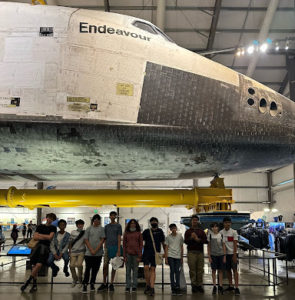
The different exhibits with many interactive and informative experiences help to make the annual middle school field trip to the California Science Center a great way for the students at The Science Academy to learn more about science while also having fun. The hands-on exhibits and IMAX movie covered a handful of scientific topics including aquatic mammal biology, human biology, evolution, genetics, engineering, architecture, environmental and climate challenges, atmospheric flight, and space travel. Overall, this field trip gave the middle schoolers a very fun, engaging, and educational experience made possible thanks to our students and their families through donations to the Science Academy Fundraising Initiative (SciFi), which paid for the IMAX admissions and bus transportation. Thank you, SciFi!
More pictures:

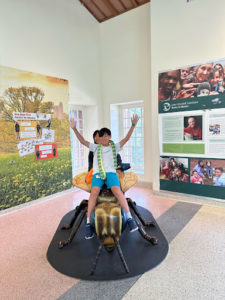

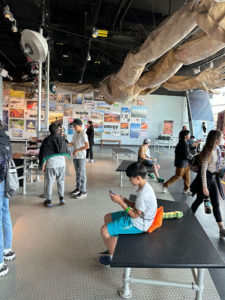
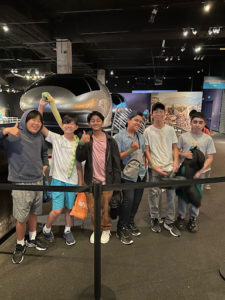


National Paper Airplane Day
by Jordin Lim
National Paper Airplane Day, celebrated each year on May 26th in the United States, is the unofficial observance of a simple, beloved aeronautical toy. This day is commonly celebrated through contests in two basic flight categories: distance and air-time.
Most people are familiar with paper airplanes and enjoy making them frequently. I know that personally, I tend to indulge in making paper airplanes whenever I get bored, but of course never in class (wink).
QUICK TIMELINE OF PAPER AIRPLANE DAY

SCIENCE ACADEMY PAPER AIRPLANE COMPETITION
Here at The Science Academy, Mr. Bradfield’s MakerSpace classes have the wonderful opportunity to participate in Paper Airplane Day at school. Every year, the class goes out to the quad where an intense paper airplane contest is carried out.
There were many creative attempts at winning this competition, with someone actually wrapping up a basketball and claiming it to be their paper airplane. I even caught glimpses of a torpedo-like airplane shooting through the skies.
Overall, the best paper airplane was created by Sutthidol Chainamnaris (8th grade) with a plane that achieved a distance of 94.5 feet!
Will you make the award-winning plane next year? Will your airplane come out on top? Better start practicing now!



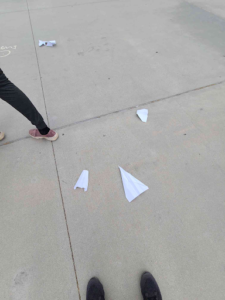
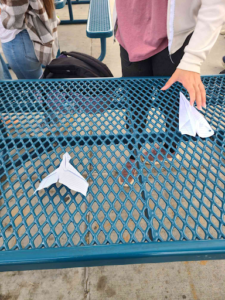
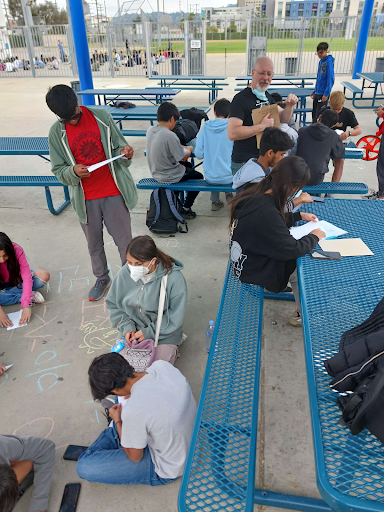
FURTHER INFORMATION ON PAPER AIRPLANES
Do you want to know the science behind paper airplanes? Watch the video below.
Do you want to make some fun paper airplanes? Check out the videos below.
This channel also has really great videos on paper airplanes:
https://youtube.com/@funpaperairplanes)
Read More
